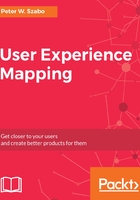
The Three Rs or the Connextra format
The most common format for user story templates is what you have already seen in the previous chapter. It's called the Three Rs or the Connextra format (a team at Connextra developed this template).
The grocery surplus e-commerce site example's first iteration: As a shopper, I want to see the contents of my shopping cart anytime, including the total value, the number of items, and their combined weight, including the total shipping costs, so that I can make decisions on adding further items.
This contains too many details, a common mistake. So, let's remove what's not a critical detail here: As a shopper, I want to see the contents of my shopping cart so that I can make decisions on adding further items.
Much better, but the third R part (so that I can make decisions on adding further items) can be omitted, and the user story will still work as intended. Not only can it can be omitted, but we should trim down any unnecessary text from our user stories to follow the principle of simplicity from the previous section.
The simplified example should read: As a shopper, I want to see the contents of my shopping cart. This is how a user story looks in the Three R format.
The big advantage of the textbook template for user stories is the fact that it's widely known and accepted.